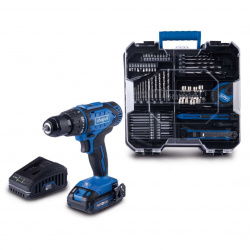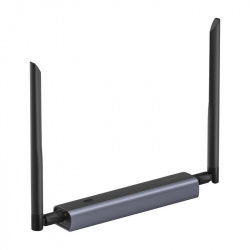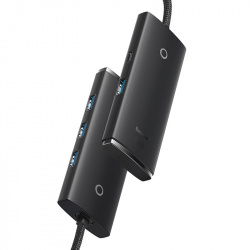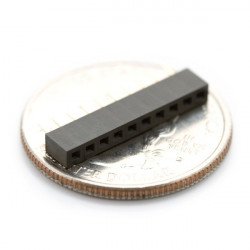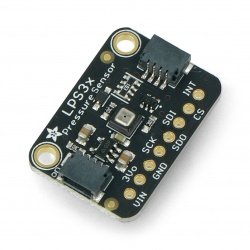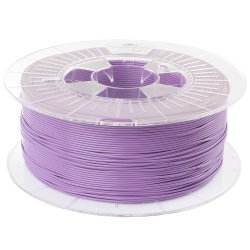- Page
- View all
- 3D print
- Minicomputers
- Electronics
- Sensors
- Robots & mechanics
- Tools & Power Supplies
- Education
- Smart Home
- Others
- 3D PRINTING
- View all
- 3D printers
- Filaments
- Filament dryers
- 3D scanners
- Creative kits for 3D projects
- Accessories for 3D printers
- Components for 3D printers construction
- 3D Pens
- CNC
- MINICOMPUTERS
- View all
- Raspberry Pi
- Arduino
- Nvidia
- Flipper Zero
- XIAO
- Odroid
- BBC micro:bit
- Other minicomputers
- PLC drivers
- M5Stack
- ESP32
- ELECTRONICS
- View all
- Computer accessories
- Automobile accessories
- Cooling
- Diodes
- Sound and acoustics
- Mounting components
- Passive elements
- Wearables (e-textiles, smart clothes)
- Cameras
- Consoles
- Memory cards & disks
- Communication
- Converters
- Electronics courses
- Microcontrollers
- Animal repellers
- LED lighting
- Programmers
- Relays
- Voltage regulators
- Artificial intelligence
- Motor drivers and servos
- Integrated circuits
- Displays and screens
- More...
- SENSORS
- View all
- Resistance sensors
- Inductive sensors
- Alarm sensors
- 9DoF IMU sensors
- Piezoelectric sensors
- Oxygen sensors
- Pressure sensors
- Twilight sensors
- Door sensors
- Hall effect sensors
- RPM sensors
- Gas sensors
- Optical sensors
- Tilt sensors
- Accelerometers
- Air quality sensors
- Sound sensors
- Gesture sensors
- Inductive contactless sensors
- Grove modules
- Gravity modules
- Limit switches
- Sensors of light and color
- Magnetic sensors
- Medical sensors
- Pressure sensors
- Sensors odbiciowe
- Distance sensors
- Weather sensors
- Liquid level sensors
- Current sensors
- Flow sensors
- Motion sensors
- Temperature sensors
- PT100 temperature probes
- Humidity sensors
- Fingerprint readers
- Encoders
- Photoresistors
- Phototransistors
- IR receivers
- Magnetometers
- Gyros
- Sensor sets
- More...
- TOOLS AND POWER SUPPLIES
- View all
- Tools
- Soldering
- Power supply
- Oscilloscopes
- Measuring instruments & devices
New products
- New
- New
- Reduced price
- Sale
Promotion products
- Sale
- Sale
- Reduced price
- Sale
Astronomical telescopes
Opticon telescope Apollo 70F300AZ 70mm x150
Astronomical telescope with a large lens that provides high quality images of distant objects. The Apollo 70F300AZ provides a wide viewing range. A dedicated 3x Barlow lens...- Discontinued product
See also
Astronomical telescopes - construction and key parameters
In the offer of our shop you can find, among others, telescopes produced by a reputable company Opticon, famous for its high quality optics. Moreover, the company provides teaching aids in the form of detailed sky maps, which are extremely useful for beginner observers. Practical manuals allow you to quickly learn how to operate the telescope and all the settings of the device. So how are astronomical telescopes built?
- The most important part of any telescope is the optical system. In the case of a mirror telescope it consists of an eyepiece and a mirror. Optical telescopes, on the other hand, are constructed from glass lenses and an objective lens. In the first and second case, the tube is responsible for connecting the elements of the optical system. Its tasks also include magnifying objects that are far away from the observer.
- Astronomical telescopes for beginners (optical ones) may be equipped with two types of lenses, i.e. dispersing and focusing ones. As far as their shape is concerned they are divided into concave and convex.
Regardless of the type of telescope we get the so called real magnified image. We can also choose a straight or inverted type of image.
How to choose a good astronomical telescope?
First of all it is worth taking into account the diameter of the mirror (in the case of mirror telescopes) or the objective (in the case of optical models). Another key parameter is the aperture, which affects, among other things, the range of observation and the resolving power of the telescope. When choosing a particular model we should not forget about the focal length expressed in millimetres and aperture. The latter parameter marked with the letter f is nothing else but the relation of the diameter of the lens to the focal length. The maximum theoretical magnification also deserves special attention.
Astronomical telescopes for beginners and experienced observers
In this category we offer astronomical telescopes with maximum theoretical magnification of up to 675x. Devices of this type are perfect for both home and educational purposes. High quality of workmanship, combined with the use of durable materials, guarantee long life and failure-free functioning of the telescopes. Among other things, there are models equipped with a lightweight yet solid aluminium tripod, which guarantees the stability of the entire structure. What else distinguishes astronomical telescopes available in our offer?
- The use of modern heads allows precise tracking of objects with the use of micro-movements.
- We offer telescopes equipped with an additional telescope which makes precise object tracking easier.
- The presence of contrast filters allows you to observe the moon in detail, no matter what phase it is in.
Astronomical telescopes allow precise observation of objects of various sizes, which are located in the so-called Deep Space. These objects include galaxies, nebulae, and even globular clusters. If you have any questions about astronomical telescopes, feel free to contact us. Our specialists will be happy to help you choose a model tailored to your specific needs and expectations.






























































































































































































































































































































